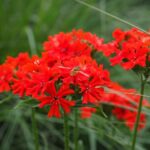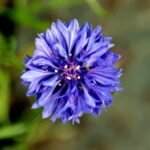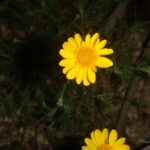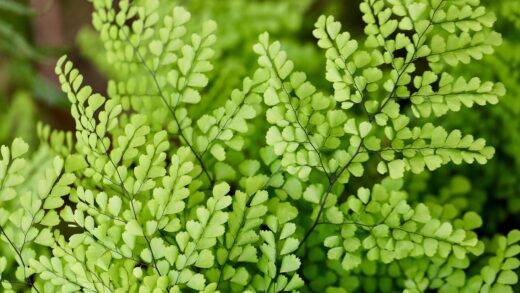Diseases and pests of the slender parrot leaf

While the slender parrot leaf is generally regarded as a robust and relatively trouble-free plant, it is not entirely immune to the challenges posed by common garden diseases and pests. Proactive monitoring and early intervention are the cornerstones of effective management, ensuring that minor issues do not escalate into major infestations or infections that could compromise the plant’s health and beauty. A healthy, well-cared-for plant is always the first line of defense, as vigorous specimens are naturally more resistant to attack than those weakened by poor growing conditions. Therefore, providing optimal light, water, and nutrition is a fundamental aspect of pest and disease prevention.
Understanding the specific threats that are most likely to affect this plant allows you to be more vigilant and to recognize the early warning signs of a problem. Pests such as aphids and spider mites are drawn to the tender new growth, while soil-borne fungal diseases like root rot are a constant threat if the plant is overwatered. Familiarizing yourself with the appearance of both the pests themselves and the damage they cause will enable you to take swift and appropriate action.
An integrated approach to pest and disease management, which combines cultural, mechanical, and, if necessary, chemical controls, is the most effective and environmentally responsible strategy. This might involve simple actions like improving air circulation, physically removing pests by hand, or using targeted, low-toxicity treatments like insecticidal soap. The goal is to manage pest populations and disease pressures below a threshold where they cause significant damage, rather than aiming for complete eradication, which is often unrealistic and can be harmful to the broader garden ecosystem.
Ultimately, maintaining a healthy slender parrot leaf is about creating a balanced environment where the plant can thrive and defend itself. Regular inspections are your most powerful tool. By taking the time to look closely at your plants on a regular basis, you can catch problems at their inception, when they are easiest to control. This observant and responsive approach will ensure that your plant remains a vibrant and healthy feature in your garden or home.
Common insect pests
The slender parrot leaf can occasionally fall prey to several common sap-sucking insects that are drawn to its succulent leaves and stems. Aphids are one of the most frequent visitors. These small, pear-shaped insects can be green, black, or pink and typically cluster on the tender new growth and the undersides of leaves. They feed by piercing the plant tissue and sucking out the sap, which can lead to distorted or stunted growth, and yellowing of the leaves. Aphids also excrete a sticky substance called honeydew, which can attract sooty mold, a black fungus that grows on the honeydew and can interfere with photosynthesis.
More articles on this topic
Spider mites are another common pest, especially in hot, dry conditions, such as those often found indoors during the winter. These tiny arachnids are difficult to see with the naked eye, but their presence is often revealed by the fine, delicate webbing they spin on the plant, particularly between the leaves and stems. They also feed by sucking sap, causing the leaves to develop a stippled or speckled appearance, with tiny yellow or white dots. In severe infestations, the leaves may turn yellow or bronze and eventually drop off the plant.
Mealybugs may also appear, particularly on indoor plants. These pests look like small, white, cottony masses and tend to hide in the leaf axils (where the leaf joins the stem) and on the undersides of leaves. Like aphids, they feed on plant sap and excrete honeydew, leading to weakened growth and the potential for sooty mold. Their waxy, cottony coating provides them with some protection from predators and pesticide applications, making them particularly challenging to control once an infestation has become established.
Whiteflies can also be a nuisance, especially in greenhouse settings or warm climates. These tiny, moth-like insects will fly up in a cloud when a plant is disturbed. Both the adults and their nymph stages feed on plant sap, causing similar symptoms to aphids, such as yellowing leaves and weakened growth. Managing these pests often requires persistence, as their life cycle is rapid, and populations can build up quickly if not addressed promptly.
Fungal and bacterial diseases
By far the most significant disease threat to the slender parrot leaf is root rot. This is not a single disease but rather a general term for the decay of a plant’s root system, typically caused by various species of soil-borne fungi such as Pythium, Phytophthora, or Rhizoctonia. The primary trigger for root rot is almost always overly wet, poorly drained, or compacted soil. When roots are deprived of oxygen due to waterlogged conditions, they become stressed and highly susceptible to attack by these opportunistic fungal pathogens. The fungi invade the root tissue, causing it to turn brown or black, become soft and mushy, and eventually die.
More articles on this topic
The above-ground symptoms of root rot can be misleading, as they often mimic the signs of under-watering. The plant may appear wilted, the leaves may turn yellow and drop, and overall growth will be stunted. This is because the rotting, dysfunctional root system is no longer able to absorb the water and nutrients the plant needs to survive. If you suspect root rot, you must check the soil and the roots themselves. A sour or foul smell from the soil is a strong indicator of decay. Healthy roots should be firm and white or light-colored, while rotted roots will be dark and soft.
Fungal leaf spot diseases can also occasionally affect the slender parrot leaf, particularly in conditions of high humidity and poor air circulation. These diseases manifest as distinct spots or lesions on the leaves, which may be brown, black, or yellow, sometimes with a colored border. As the disease progresses, the spots may enlarge and merge, and in severe cases, can cause the leaves to drop prematurely. While leaf spot diseases are usually not fatal, they can detract from the plant’s ornamental value.
Powdery mildew is another fungal issue that can arise, appearing as a white or grayish powdery coating on the surface of the leaves, stems, and sometimes flowers. It thrives in conditions of high humidity and moderate temperatures. Although it is often more of a cosmetic issue, a severe infection can stress the plant by blocking sunlight and interfering with photosynthesis, leading to yellowing leaves and reduced vigor. Proper spacing and good air circulation are key preventative measures against both leaf spot and powdery mildew.
Integrated pest management
Integrated Pest Management (IPM) is a holistic and sustainable approach to dealing with pests and diseases. The first and most important step in any IPM program is prevention through good cultural practices. This involves creating a healthy growing environment that minimizes stress on the slender parrot leaf and makes it less attractive to pests and pathogens. This includes providing the correct amount of light, using well-draining soil, watering properly to avoid both drought and waterlogging, and ensuring good air circulation through proper spacing and pruning. A strong, healthy plant is inherently better equipped to fend off attacks.
Regular monitoring is the next key component of IPM. Make it a habit to inspect your plants closely at least once a week. Check the undersides of leaves, the points where leaves join the stems, and the new growth tips, as these are common hiding places for pests. By catching an infestation or the first signs of a disease early, you can often manage it with simple, non-chemical methods before it becomes a widespread problem. Early detection dramatically increases the chances of successful and low-impact control.
When a pest is detected, the first line of defense should be mechanical or physical controls. For a small infestation of aphids or mealybugs, a strong jet of water from a hose or spray bottle can be surprisingly effective at dislodging them from the plant. Larger pests can be picked off by hand and disposed of. For spider mites, frequently wiping down the leaves with a damp cloth can help to disrupt their webs and reduce their numbers. Pruning out heavily infested or diseased portions of the plant can also help to remove the problem and prevent its spread.
Biological control is another important element of IPM, especially in an outdoor garden setting. This involves encouraging natural predators that feed on common pests. Ladybugs, lacewings, and hoverflies are all voracious predators of aphids. You can attract these beneficial insects to your garden by planting a diversity of flowering plants, particularly those with small flowers like dill, fennel, and alyssum. By creating a welcoming habitat for these natural enemies, you can establish a self-regulating system that helps to keep pest populations in check.
Organic and chemical treatment options
If cultural and mechanical controls are not sufficient to manage a pest problem, the next step is to consider treatment options, starting with the least toxic choices. Insecticidal soaps and horticultural oils are excellent organic-friendly options for controlling soft-bodied insects like aphids, spider mites, mealybugs, and whiteflies. These products work by physically suffocating the pests or disrupting their cell membranes, and they must come into direct contact with the pests to be effective. They have low toxicity to humans and beneficial insects and break down quickly in the environment.
Neem oil is another powerful and popular organic pesticide and fungicide. Derived from the seeds of the neem tree, it works in multiple ways. It acts as a repellent, an anti-feedant, and a growth regulator that disrupts the life cycle of many insects. It is also effective against certain fungal diseases like powdery mildew. When using any of these sprays, it is crucial to thoroughly coat all surfaces of the plant, especially the undersides of the leaves where pests often congregate. It is also best to apply them in the early morning or evening to avoid spraying in direct sun, which can cause leaf burn.
In the case of fungal diseases like powdery mildew or leaf spot, improving air circulation and reducing leaf wetness are the primary management strategies. If the problem persists, a fungicide may be necessary. Organic options include sprays containing potassium bicarbonate or sulfur. These work by changing the pH of the leaf surface, making it inhospitable to the fungal spores. For more persistent fungal issues, copper-based fungicides can be used, although care must be taken as they can be toxic to some plants if applied incorrectly.
The use of synthetic chemical pesticides should always be a last resort. While they can be very effective, they often have unintended consequences, such as harming beneficial insects, pollinators, and other wildlife. They can also lead to the development of pesticide-resistant pest populations over time. If you do choose to use a synthetic pesticide, it is imperative to select a product that is specifically labeled for use on ornamental plants and for the particular pest you are targeting. Always read and follow the label instructions carefully regarding application rates, timing, and safety precautions.
Preventative measures for a healthy plant
The most effective strategy for dealing with diseases and pests is to prevent them from becoming a problem in the first place. This proactive approach begins with sourcing healthy plants. When purchasing a new slender parrot leaf, inspect it carefully for any signs of pests or disease before you bring it home. It is also a good practice to quarantine new plants for a few weeks by keeping them isolated from your other plants. This allows time for any hidden issues to emerge where they can be dealt with easily without risking your entire collection.
Providing the ideal growing environment is the cornerstone of prevention. As has been emphasized, this means ensuring the plant receives the appropriate amount of sunlight for vibrant color and strong growth. It requires planting in a well-draining soil mix to prevent root rot and watering correctly to keep the plant hydrated but not waterlogged. Good air circulation, achieved through proper spacing and occasional pruning, is also critically important for discouraging the development of fungal diseases that thrive in stagnant, humid conditions.
Maintaining good garden hygiene is another simple yet powerful preventative measure. Regularly remove any dead leaves, fallen flowers, or other plant debris from around the base of your plants and from the soil surface. This material can harbor pest eggs and fungal spores, so removing it eliminates potential sources of future infestations and infections. It is also important to keep your gardening tools, such as pruning shears and trowels, clean. Disinfect them with rubbing alcohol or a bleach solution between uses, especially after working with a diseased plant, to avoid spreading pathogens to healthy ones.
Finally, avoid stressing your plants. A stressed plant is a vulnerable plant. Stress can be caused by a wide range of factors, including improper watering, nutrient deficiencies, temperature extremes, or physical damage. By providing consistent and appropriate care, you keep the plant’s natural defense systems strong. A healthy, vigorously growing slender parrot leaf is much less likely to succumb to pests and diseases than one that is struggling due to suboptimal growing conditions. Prevention through excellent care is always the best medicine.
📷 Flickr / Szerző: cultivar413 / Licence: CC BY 2.0

















